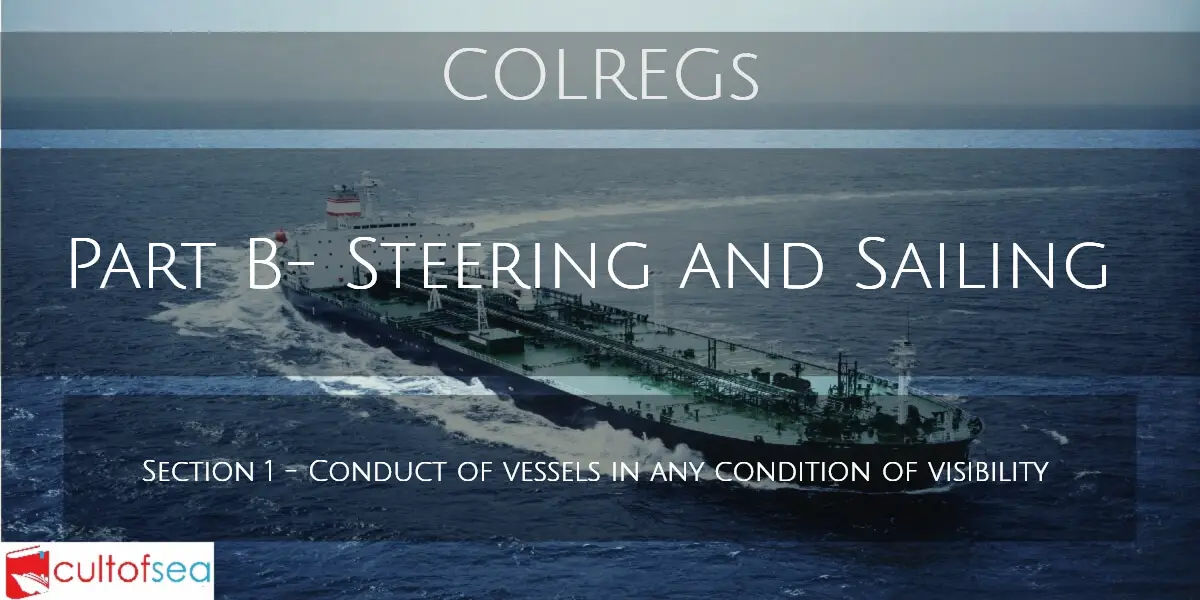Section 1 — Conduct of Vessels in any Condition of Visibility
Rule 5 : Look-out
Every vessel shall at all times maintain a proper look-out by sight and hearing as by all available means appropriate in the prevailing circumstances and conditions so as to make a full appraisal of the situation and of the risk of collision.
Meaning: Lookout is very important and should take about 70 – 80% of the watch keeping officers time. The rest is to be the full appraisal of what he sees, and the action that is taken by him. Lookout is also for getting the feedback on the action that he or the other ship took to avoid the situation.
Look out means to see and understand the situation, by sight and hearing as well by other means which may be by Radar and GPS (position) and by any other electronic devices.
Appropriate in the prevailing conditions means – in condition of poor visibility, the Radar and ears may be the only means of detecting other vessels, here again, the range scale selection should be appropriate, if the vessel is in the middle of a fishing fleet there is no point keeping a watch on 12Nm range and only on one Radar. If 2 Radars exist then one should be set to a smaller range and the other on 12nm for detecting other vessels if only 1 Radar is available then periodic switches have to be done between smaller scale and a longer scale.
In any case, the echo sounder the log the GPS and the chart and vessels charted position have to be also monitored. Because for a full appraisal of the situation, all factors have to be taken into consideration, can the own vessel alter to keep out of the way or is it better to slow down.

Leave a Reply